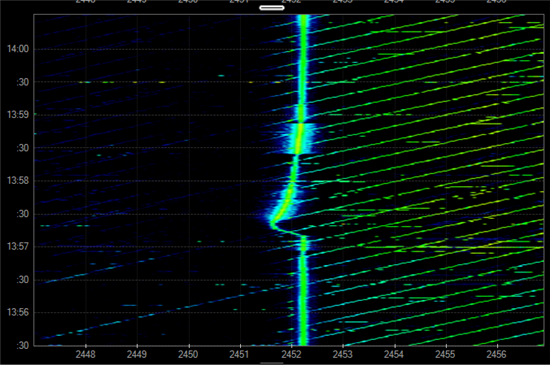I have a similar/same problem as stated in this thread:
http://e2e.ti.com/support/low_power_rf/f/660/t/310584.aspx
I have custom hardware with a CC2564. For a test after my hardware was not discoverable with the stack running I tried a CW test.
There I found, that the TX frequency was everything, but not what I set up in the command. To easily identify the frequency in the 2.4GHz band I set up the powerlevel to 15, what obviously (as stated in the thread above) is not the best idea. After lowering the powerlevel I get similar results, the frequency is not what is set up on one board, on the other board it is on the right spot, but the amplitude is veeery low ( about -95dBm when placing it closely to the Wi-Spy)
Can it be that the high power level destroyed something, like the bluetooth chip, or something on the way to the antenna? (I use more or less the reference design)
I send the following commands to the Chip:
TX: 01 84 FD 0C 00 00 4E 06 00 00 00 00 00 00 00 00
RX: 04 0E 04 01 84 FD 00
TX: 01 01 FF 06 0C 18 19 00 01 01
RX: 04 0E 04 01 01 FF 00
TX: 01 80 FD 06 FF FF FF FF FF 01
RX: 04 0E 04 01 80 FD 00
as found in a testing PDF.
Instead of seeing something at 2479MHz currently the frequency is at 2452,33 MHz with a high temperature dependence (heating the pcb with the finger can shift the frequency by several MHz)
I also observed once, that the frequency hopped to the right spot, and was stable there, but hopped back to the instable state occasionally.
So where can I search for a solution? Currently I only have these two boards, the next batch is comming next week, so I can test them without setting them to powerlevel 15 before.
Thanks for the advice!
Edit: Attatced example of heating the bluetooth chip with a finger (probably only 2-3°C) 

